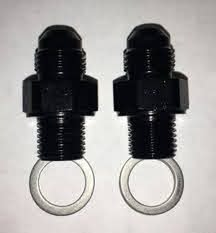Take the valve off what it's on (assuming you can) and put the valve into a bench vise in order to hold it more securely. Then either put a wrench on the hex nipple (the ones I have use a 7/8" wrench, which I have at least a few of) and turn it. Remember, righty tighty, lefty loosy. I've done this when I couldn't move a fitting when on my keggle (or other item) with solid results. Deep sockets (on a ratchet) can also help. More if you have some right sized metal pipe that you can slip over the handle. Or use a breaker bar (doesn't everyone have at least one of those??). Only 'lube' that should be needed is "elbow grease".

Even with galling (if you applied enough pipe tape to the fitting it won't gall) you should be able to remove it with enough force. Of course, one (or both) of the items might have ruined threads by then. Just use it as a learning experience on what NOT to do.
IME, with stainless fittings, even a moderate amount of Teflon pipe tape (found in most hardware stores) is sufficient for keeping fittings healthy and preventing leaks. We're not subjecting things to stresses associated with the nuclear power industry here.

At most, we're talking about boiling liquid temps (~212F) and maybe radiant heat from gas burners.
The other month I went through a lot of the fittings on my keggles and plate chiller and changed over the male fittings (from cam lock to ball lock). Some were on rather securely. I had my helper (aka "Brew Bitch" or "Manual Labor") help by holding the keggles so they wouldn't tile as I used wrenches. I was able to remove even the most secure fittings this way.
IF you do end up using penetrating oil (of any kind) I would make damned sure to clean all traces off of the items you're going to use again. If the ball valve is a two, or three, piece, take it apart and clean it completely. I'd even soak in either denatured alcohol or acetone to remove all traces.
Personally, if you're at that point through, I'd just toss the set and replace. IMO, it's simply not worth dealing with things like that either now, or in the future. Especially if the threads have ANY damage to them (from going gorilla when tightening them). When I've tightened fittings, it usually no more than 1/4 turn past snug. Check for leaks and adjust if needed. 99.95% of any leaks I've had were through vessel walls, not at fitting to fitting mating. I'm actually slowly progressing through my brewing vessels to go from no-weld, to welded configuration. Helps when you know a [TIG] welder that works for beer.






















































![Craft A Brew - Safale BE-256 Yeast - Fermentis - Belgian Ale Dry Yeast - For Belgian & Strong Ales - Ingredients for Home Brewing - Beer Making Supplies - [3 Pack]](https://m.media-amazon.com/images/I/51bcKEwQmWL._SL500_.jpg)





